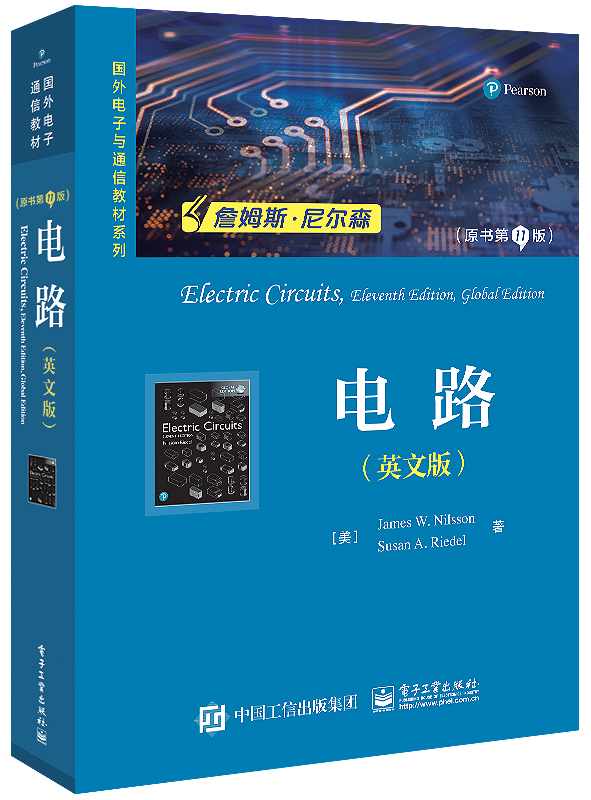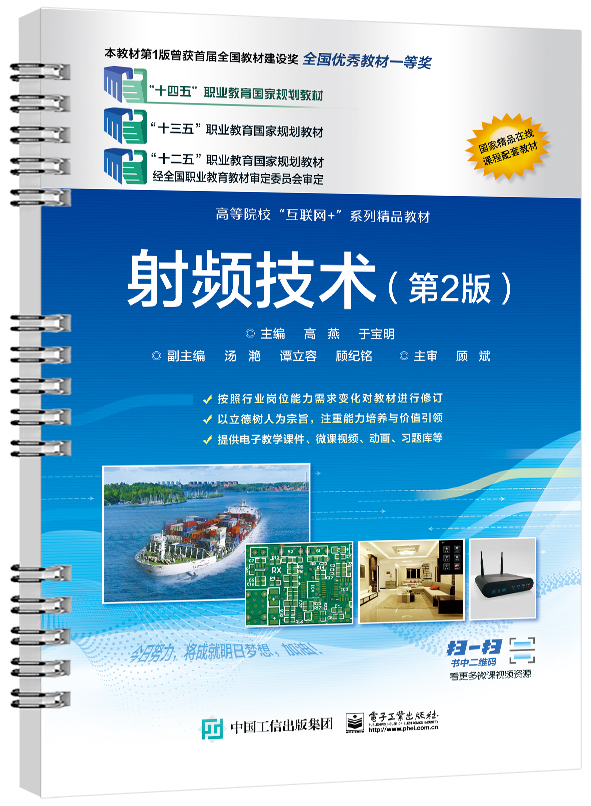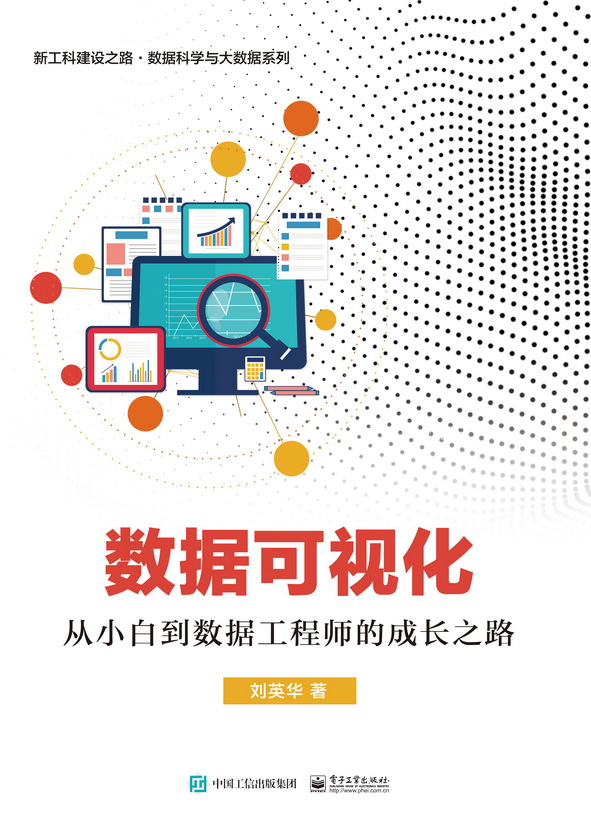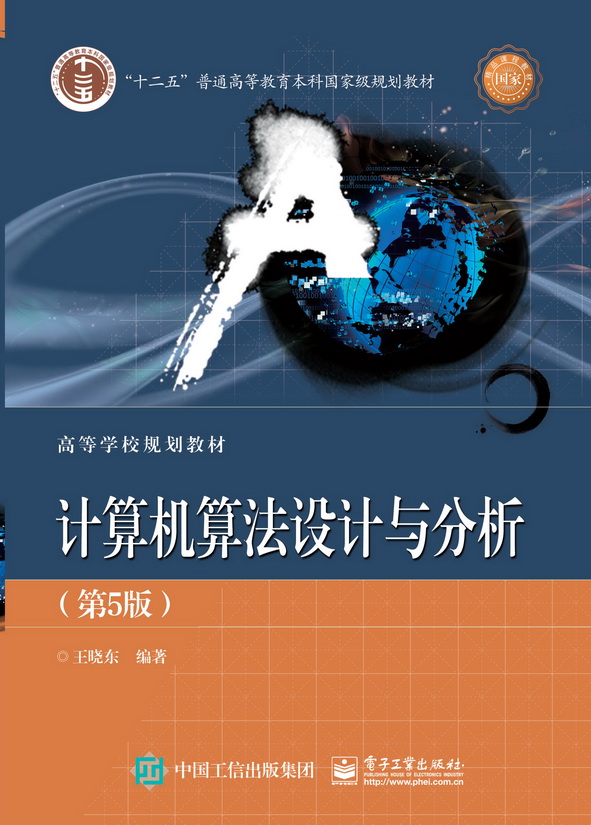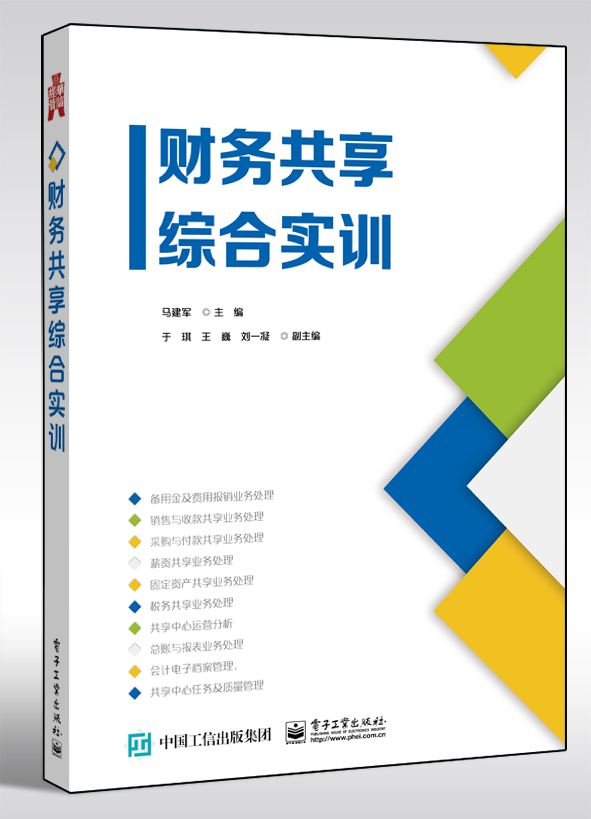电路(原书第11版)(英文版)
丛 书 名:
国外电子与通信教材系列
作 译 者:James W. Nilsson(詹姆斯·W. 尼尔森)
出 版 日 期:2023-09-01
书 代 号:G0464410
I S B N:9787121464416
图书简介:
本书被IEEE Spectrum期刊称为“电路领域的经典之作”,是欧美电路课程广泛采用的教材。全书共18章,系统地讲述了电路的基本概念、基本理论、基本分析方法和计算方法。主要内容包括:电路基本元件、简单电阻电路分析、电路常见分析法、运算放大器基本应用电路、一阶和二阶动态电路的分析、正弦稳态电路分析及其功率计算、平衡三相电路、拉普拉斯变换及其应用、选频电路、有源滤波器、傅里叶级数及傅里叶变换、双端口网络等。书中每章内容均由现实生活中的实际应用展开,阐述细致并列出了详尽的图表资料,且附有大量例题、自测练习和课后习题。例题讲解透彻,非常适合自学,是一本电路分析的优秀教材。
-
配 套 资 源
本书资源
本书暂无资源 -
图 书 内 容
内容简介
本书被IEEE Spectrum期刊称为“电路领域的经典之作”,是欧美电路课程广泛采用的教材。全书共18章,系统地讲述了电路的基本概念、基本理论、基本分析方法和计算方法。主要内容包括:电路基本元件、简单电阻电路分析、电路常见分析法、运算放大器基本应用电路、一阶和二阶动态电路的分析、正弦稳态电路分析及其功率计算、平衡三相电路、拉普拉斯变换及其应用、选频电路、有源滤波器、傅里叶级数及傅里叶变换、双端口网络等。书中每章内容均由现实生活中的实际应用展开,阐述细致并列出了详尽的图表资料,且附有大量例题、自测练习和课后习题。例题讲解透彻,非常适合自学,是一本电路分析的优秀教材。图书详情
ISBN:9787121464416开 本:16(185*260)页 数:784字 数:1631本书目录
CHAPTER 1 Circuit Variables Practical Perspective: Balancing Power 1.1 Electrical Engineering: An Overview 1.2 The International System of Units 1.3 Circuit Analysis: An Overview 1.4 Voltage and Current 1.5 The Ideal Basic Circuit Element 1.6 Power and Energy Practical Perspective: Balancing Power Summary Problems CHAPTER 2 Circuit Elements Practical Perspective: Heating with Electric Radiators 2.1 Voltage and Current Sources 2.2 Electrical Resistance (Ohm’s Law) 2.3 Constructing a Circuit Model 2.4 Kirchhoff’s Laws 2.5 Analyzing a Circuit Containing Dependent Sources Practical Perspective: Heating with Electric Radiators Summary Problems CHAPTER 3 Simple Resistive Circuits Practical Perspective: Resistive Touch Screens 3.1 Resistors in Series 3.2 Resistors in Parallel 3.3 The Voltage-Divider and Current-Divider Circuits 3.4 Voltage Division and Current Division 3.5 Measuring Voltage and Current 3.6 Measuring Resistance—The Wheatstone Bridge 3.7 Delta-to-Wye (Pi-to-Tee) Equivalent Circuits Practical Perspective: Resistive Touch Screens Summary Problems CHAPTER 4 Techniques of Circuit Analysis Practical Perspective: Circuits with Realistic Resistors 4.1 Terminology 4.2 Introduction to the Node-Voltage Method 4.3 The Node-Voltage Method and Dependent Sources 4.4 The Node-Voltage Method: Some Special Cases 4.5 Introduction to the Mesh-Current Method 4.6 The Mesh-Current Method and Dependent Sources 4.7 The Mesh-Current Method: Some Special Cases 4.8 The Node-Voltage Method Versus the Mesh-Current Method 4.9 Source Transformations 4.10 Thévenin and Norton Equivalents 4.11 More on Deriving the Thévenin Equivalent 4.12 Maximum Power Transfer 4.13 Superposition Practical Perspective: Circuits with Realistic Resistors Summary Problems CHAPTER 5 The Operational Amplifier Practical Perspective: Sensors 5.1 Operational Amplifier Terminals 5.2 Terminal Voltages and Currents 5.3 The Inverting-Amplifier Circuit 5.4 The Summing-Amplifier Circuit 5.5 The Noninverting-Amplifier Circuit 5.6 The Difference-Amplifier Circuit 5.7 A More Realistic Model for the Operational Amplifier Practical Perspective: Sensors Summary Problems CHAPTER 6 Inductance, Capacitance, and Mutual Inductance Practical Perspective: Capacitive Touch Screens 6.1 The Inductor 6.2 The Capacitor 6.3 Series-Parallel Combinations of Inductance and Capacitance 6.4 Mutual Inductance 6.5 A Closer Look at Mutual Inductance Practical Perspective: Capacitive Touch Screens Summary Problems CHAPTER 7 Response of First-Order RL and RC Circuits Practical Perspective: Artificial Pacemaker 7.1 The Natural Response of an RL Circuit 7.2 The Natural Response of an RC Circuit 7.3 The Step Response of RL and RC Circuits 7.4 A General Solution for Step and Natural Responses 7.5 Sequential Switching 7.6 Unbounded Response 7.7 The Integrating Amplifier Practical Perspective: Artificial Pacemaker Summary Problems CHAPTER 8 Natural and Step Responses of RLC Circuits Practical Perspective: Clock for Computer Timing 8.1 Introduction to the Natural Response of a Parallel RLC Circuit 8.2 The Forms of the Natural Response of a Parallel RLC Circuit 8.3 The Step Response of a Parallel RLC Circuit 8.4 The Natural and Step Response of a Series RLC Circuit 8.5 A Circuit with Two Integrating Amplifiers Practical Perspective: Clock for Computer Timing Summary Problems CHAPTER 9 Sinusoidal Steady-State Analysis Practical Perspective: A Household Distribution Circuit 9.1 The Sinusoidal Source 9.2 The Sinusoidal Response 9.3 The Phasor 9.4 The Passive Circuit Elements in the Frequency Domain 9.5 Kirchhoff’s Laws in the Frequency Domain 9.6 Series, Parallel, and Delta-to-Wye Simplifications 9.7 Source Transformations and Thévenin–Norton Equivalent Circuits 9.8 The Node-Voltage Method 9.9 The Mesh-Current Method 9.10 The Transformer 9.11 The Ideal Transformer 9.12 Phasor Diagrams Practical Perspective: A Household Distribution Circuit Summary Problems CHAPTER 10 Sinusoidal Steady-State Power Calculations Practical Perspective: Vampire Power 10.1 Instantaneous Power 10.2 Average and Reactive Power 10.3 The rms Value and Power Calculations 10.4 Complex Power 10.5 Power Calculations 10.6 Maximum Power Transfer Practical Perspective: Vampire Power Summary Problems CHAPTER 11 Balanced Three-Phase Circuits Practical Perspective: Transmission and Distribution of Electric Power 11.1 Balanced Three-Phase Voltages 11.2 Three-Phase Voltage Sources 11.3 Analysis of the Wye-Wye Circuit 11.4 Analysis of the Wye-Delta Circuit 11.5 Power Calculations in Balanced Three-Phase Circuits 11.6 Measuring Average Power in Three-Phase Circuits Practical Perspective: Transmission and Distribution of Electric Power Summary Problems CHAPTER 12 Introduction to the Laplace Transform Practical Perspective: Transient Effects 12.1 Definition of the Laplace Transform 12.2 The Step Function 12.3 The Impulse Function 12.4 Functional Transforms 12.5 Operational Transforms 12.6 Applying the Laplace Transform 12.7 Inverse Transforms 12.8 Poles and Zeros of F(s) 12.9 Initial- and Final-Value Theorems Practical Perspective: Transient Effects Summary Problems CHAPTER 13 The Laplace Transform in Circuit Analysis Practical Perspective: Surge Suppressors 13.1 Circuit Elements in the s Domain 13.2 Circuit Analysis in the s Domain 13.3 Applications 13.4 The Transfer Function 13.5 The Transfer Function in Partial Fraction Expansions 13.6 The Transfer Function and the Convolution Integral 13.7 The Transfer Function and the Steady-State Sinusoidal Response 13.8 The Impulse Function in Circuit Analysis Practical Perspective: Surge Suppressors Summary Problems CHAPTER 14 Introduction to Frequency Selective Circuits Practical Perspective: Pushbutton Telephone Circuits 14.1 Some Preliminaries 14.2 Low-Pass Filters 14.3 High-Pass Filters 14.4 Bandpass Filters 14.5 Bandreject Filters Practical Perspective: Pushbutton Telephone Circuits Summary Problems CHAPTER 15 Active Filter Circuits Practical Perspective: Bass Volume Control 15.1 First-Order Low-Pass and High-Pass Filters 15.2 Scaling 15.3 Op Amp Bandpass and Bandreject Filters 15.4 Higher-Order Op Amp Filters 15.5 Narrowband Bandpass and Bandreject Filters Practical Perspective: Bass Volume Control Summary Problems CHAPTER 16 Fourier Series Practical Perspective: Active High-Q Filters 16.1 Fourier Series Analysis: An Overview 16.2 The Fourier Coefficients 16.3 The Effect of Symmetry on the Fourier Coefficients 16.4 An Alternative Trigonometric Form of the Fourier Series 16.5 An Application 16.6 Average-Power Calculations with Periodic Functions 16.7 The rms Value of a Periodic Function 16.8 The Exponential Form of the Fourier Series 16.9 Amplitude and Phase Spectra Practical Perspective: Active High-Q Filters Summary Problems CHAPTER 17 The Fourier Transform Practical Perspective: Filtering Digital Signals 17.1 The Derivation of the Fourier Transform 17.2 The Convergence of the Fourier Integral 17.3 Using Laplace Transforms to Find Fourier Transforms 17.4 Fourier Transforms in the Limit 17.5 Some Mathematical Properties 17.6 Operational Transforms 17.7 Circuit Applications 17.8 Parseval’s Theorem Practical Perspective: Filtering Digital Signals Summary Problems CHAPTER 18 Two-Port Circuits Practical Perspective: Characterizing an Unknown Circuit 18.1 The Terminal Equations 18.2 The Two-Port Parameters 18.3 Analysis of the Terminated Two-Port Circuit 18.4 Interconnected Two-Port Circuits Practical Perspective: Characterizing an Unknown Circuit Summary Problems APPENDIX A The Solution of Linear Simultaneous Equations APPENDIX B Complex Numbers APPENDIX C More on Magnetically Coupled Coils and Ideal Transformers APPENDIX D The Decibel APPENDIX E Bode Diagrams APPENDIX F An Abbreviated Table of Trigonometric Identities APPENDIX G An Abbreviated Table of Integrals APPENDIX H Common Standard Component Values Answers to Selected Problems展开前 言
Preface The Eleventh Edition of Electric Circuits represents the most extensive revision to the text since the Fifth Edition, published in 1996. Every sentence, paragraph, subsection, and chapter has been examined to improve clarity, readability, and pedagogy. Yet the fundamental goals of the text are unchanged. These goals are: • To build new concepts and ideas on concepts previously presented. This challenges students to see the explicit connections among the many circuit analysis tools and methods. • To develop problem-solving skills that rely on a solid conceptual foundation. This challenges students to examine many different approaches to solving a problem before writing a single equation. • To introduce realistic engineering experiences at every opportunity. This challenges students to develop the insights of a practicing engineer and exposes them to practice of engineering. Why This Edition? The Eleventh Edition of Electric Circuits incorporates the following new and revised elements: • Analysis Methods – This new feature identifies the steps needed to apply a particular circuit analysis technique. Many students struggle just to get started when analyzing a circuit, and the analysis methods will reduce that struggle. Some of the analysis methods that are used most often can be found inside the book’s covers for easy reference. • Examples – Many students rely on examples when developing and refining their problem-solving skills. We identified many places in the text that needed additional examples, and as a result the number of examples has increased by nearly 35% to 200. • End-of-chapter problems – Problem solving is fundamental to the study of circuit analysis. Having a wide variety of problems to assign and work is a key to success in any circuits course. Therefore, some existing end-of-chapter problems were revised, and some new end-of-chapter problems were added. Approximately 30% of the problems in the Eleventh Edition were rewritten. • Fundamental equations and concepts – These important elements in the text were previously identified with margin notes. In this edition, the margin notes have been replaced by a second-color background, enlarged fonts, and a descriptive title for each fundamental equation and concept. In additional, many equation numbers have been eliminated to make it easier to distinguish fundamental equations from the many other equations in the text. • Solving simultaneous equations – Most circuit analysis techniques in this text eventually require you to solve two or more simultaneous linear algebraic equations. Appendix A has been extensively revised and includes examples of paper-and-pencil techniques, calculator techniques, and computer software techniques. Hallmark Features Analysis Methods Students encountering circuit analysis for the first time can benefit from step-by-step directions that lead them to a problem’s solution. We have compiled these directions in a collection of analysis methods, and revised many of the examples in the text to employ these analysis methods. Chapter Problems Users of Electric Circuits have consistently rated the Chapter Problems as one of the book’s most attractive features. In the Eleventh Edition, there are 1185 end-of-chapter problems with approximately 30% that have been revised from the previous edition. Problems are organized at the end of each chapter by section. Practical Perspectives The Eleventh Edition continues using Practical Perspectives to introduce the chapter. They provide real-world circuit examples, taken from real-world devices. Every chapter begins by describing a practical application of the material that follows. After presenting that material, the chapter revisits the Practical Perspective, performing a quantitative circuit analysis using the newly introduced chapter material. A special icon identifies end-of-chapter problems directly related to the Practical Perspective application. These problems provide additional opportunities for solving real-world problems using the chapter material. Assessment Problems Each chapter begins with a set of chapter objectives. At key points in the chapter, you are asked to stop and assess your mastery of a particular objective by solving one or more assessment problems. The answers to all of the assessment problems are given at the conclusion of each problem, so you can check your work. If you are able to solve the assessment problems for a given objective, you have mastered that objective. If you need more practice, several end-of-chapter problems that relate to the objective are suggested at the conclusion of the assessment problems. Examples Every chapter includes many examples that illustrate the concepts presented in the text in the form of a numeric example. There are now nearly 200 examples in this text, an increase of about 35% when compared to the previous edition. The examples illustrate the application of a particular concept, often employ an Analysis Method, and exemplify good problem-solving skills. Fundamental Equations and Concepts Throughout the text, you will see fundamental equations and concepts set apart from the main text. This is done to help you focus on some of the key principles in electric circuits and to help you navigate through the important topics. Integration of Computer Tools Computer tools can assist students in the learning process by providing a visual representation of a circuit’s behavior, validating a calculated solution, reducing the computational burden of more complex circuits, and iterating toward a desired solution using parameter variation. This computational support is often invaluable in the design process. The Eleventh Edition supports PSpice® and Multisim®, both popular computer tools for circuit simulation and analysis. Chapter problems suited for exploration with PSpice and Multisim are marked accordingly. Design Emphasis The Eleventh Edition continues to support the emphasis on the design of circuits in many ways. First, many of the Practical Perspective discussions focus on the design aspects of the circuits. The accompanying Chapter Problems continue the discussion of the design issues in these practical examples. Second, design-oriented Chapter Problems have been labeled explicitly, enabling students and instructors to identify those problems with a design focus. Third, the identification of problems suited to exploration with PSpice or Multisim suggests design opportunities using these software tools. Fourth, some problems in nearly every chapter focus on the use of realistic component values in achieving a desired circuit design. Once such a problem has been analyzed, the student can proceed to a laboratory to build and test the circuit, comparing the analysis with the measured performance of the actual circuit. Prerequisites In writing the first 12 chapters of the text, we have assumed that the reader has taken a course in elementary differential and integral calculus. We have also assumed that the reader has had an introductory physics course, at either the high school or university level, that introduces the concepts of energy, power, electric charge, electric current, electric potential, and electromagnetic fields. In writing the final 6 chapters, we have assumed the student has had, or is enrolled in, an introductory course in differential equations. Course Options The text has been designed for use in a one-semester, two-semester, or a three-quarter sequence. • Single-semester course: After covering Chapters 1~4 and Chapters 6~10 (omitting Sections 7.7 and 8.5) the instructor can develop the desired emphasis by covering Chapter 5 (operational amplifiers), Chapter 11 (three-phase circuits), Chapters 13 and 14 (Laplace methods), or Chapter 18 (Two-Port Circuits). • Two-semester sequence: Assuming three lectures per week, cover the first nine chapters during the first semester, leaving Chapters 10~18 for the second semester. • Academic quarter schedule: Cover Chapters 1~6 in the first quarter, Chapters 7~12 in the second quarter, and Chapters 13~18 in the third quarter. Note that the introduction to operational amplifier circuits in Chapter 5 can be omitted with minimal effect on the remaining material. If Chapter 5 is omitted, you should also omit Section 7.7, Section 8.5, Chapter 15, and those assessment problems and end-of-chapter problems that pertain to operational amplifiers. There are several appendixes at the end of the book to help readers make effective use of their mathematical background. Appendix A presents several different methods for solving simultaneous linear equations; complex numbers are reviewed in Appendix B; Appendix C contains additional material on magnetically coupled coils and ideal transformers; Appendix D contains a brief discussion of the decibel; Appendix E is dedicated to Bode diagrams; Appendix F is devoted to an abbreviated table of trigonometric identities that are useful in circuit analysis; and an abbreviated table of useful integrals is given in Appendix G. Appendix H provides tables of common standard component values for resistors, inductors, and capacitors, to be used in solving many end-of-chapter problems. Selected Answers provides answers to selected end-of-chapter problems. Acknowledgments I will be forever grateful to Jim Nilsson for giving me the opportunity to collaborate with him on this textbook. I started by revising the PSpice supplement for the Third Edition, and became a co-author of the Fifth Edition. Jim was a patient and gracious mentor, and I learned so much from him about teaching and writing and hard work. It is a great honor to be associated with him through this textbook, and to impact the education of the thousands of students who use this text. There were many hard-working people behind the scenes at our publisher who deserve my thanks and gratitude for their efforts on behalf of the Eleventh Edition. At Pearson, I would like to thank Norrin Dias, Erin Ault, Rose Kernan, and Scott Disanno for their continued support and encouragement, their professional demeanor, their willingness to lend an ear, and their months of long hours and no weekends. The author would also like to acknowledge the staff at Integra Software Solutions for their dedication and hard work in typesetting this text. I am very grateful for the many instructors and students who have done formal reviews of the text or offered positive feedback and suggestions for improvement more informally. I am pleased to receive email from instructors and students who use the book, even when they are pointing out an error I failed to catch in the review process. I have been contacted by people who use our text from all over the world, and I thank all of you for taking the time to do so. I use as many of your suggestions as possible to continue to improve the content, the pedagogy, and the presentation in this text. I am privileged to have the opportunity to impact the educational experience of the many thousands of future engineers who will use this text. Susan A. Riedel展开作者简介
James W. Nilsson教授在艾奥瓦州立大学任教39年。从艾奥瓦州立大学退休后,一直在圣母大学和美国空军学院担任客座教授。他撰写的教材荣获过许多奖励和荣誉。1990年被选为的电气和电子工程师学会的会士。Susan A. Riedel教授从1981以来,在马凯特大学的电气工程和计算机系任教。<BR>James W. Nilsson教授在艾奥瓦州立大学任教39年。从艾奥瓦州立大学退休后,一直在圣母大学和美国空军学院担任客座教授。他撰写的教材荣获过许多奖励和荣誉。1990年被选为的电气和电子工程师学会的会士。Susan A. Riedel教授从1981以来,在马凯特大学的电气工程和计算机系任教。 -
样 章 试 读
-
图 书 评 价 我要评论
